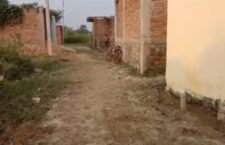A special ground report from Khabar Lahariya documents how the mainstream headlines may have moved on from the pandemic, but rural India’s displaced migrant workers are still waiting on the promises of employment and welfare schemes
If you are a resident of Bundelkhand or most of rural India, you are reared on the fantastical myths and legends of welfare programs, money deposited in your bank accounts, and government funded schemes that will help alleviate your hunger. The coronavirus added one more myth to our repertoire: aatmanirbharta or self-sufficiency. The 10.4 million migrant workers who left their cities under the impending threat of unemployment and penury were forced to take that myth rather literally; many of them allege that they have received no government aid and have not even been made aware of provisions they can register for since the beginning of the lockdown on 24th March and after their arduous journey home. Our reportage over the past few months of the coronavirus pandemic attests that the majority of migrant workers in Bundelhand are still waiting to bear the fruits of Prime Minister Modi’s Garib Kalyan Rozgar Abhiyan, a national employment scheme launched in June 2020 with an initial funding of ₹50,000 crore for migrant workers who returned to their home states during the coronavirus-induced lockdown, across 116 districts in six states.
Bharat Singh, a labourer from Mahoba says, “I got home with so much difficulty. There was no transport, the policemen were harassing us, our feet had blisters from walking endlessly.
[Since I have been back] there has been no help from the government. We had our basic ration, that’s all. But we haven’t received any benefits from the government…No one has told what a Labour Department is, and how we can use it. The Pradhan should be telling us all this!”
Since the inception of the lockdown, unemployment rates in the country have rocketed to over 20 percent in March, turning over 100 million workers out of jobs. As of October, employment rates have fallen further accompanied by a decapacitated economy that contracted by almost 24 percent. The future looks bleak, since the government seems more invested in whipping up communal frenzy in the wake of the Bihar polls than in providing relief measures to its workers or in resuscitating the economy through stimulus measures.
Bharat, who along with his compatriots form approximately 20 percent of the nation’s workforce, has had to brave starvation, the lack of transport or provisions, and future unemployment, in his journey back home. His is not an isolated story. Yet, his homecoming did not prove to be the respite from the daily struggles of life he had hoped it would be.
“There are no jobs here so we’d have to go back to Delhi or to some other city. How can one survive here? Agriculture is not a viable source of income. We do have to do labour work either way. Here, we work one day and sit out the next few days. In Delhi, we get enough to save some for our kids.”
Girija, a labourer who left Delhi to return home narrates her harrowing experience travelling, without transport or protection: “I was in Delhi for three months, unemployed. All of my savings finished off too. I was mugged on the way back home as well. The muggers attacked my husband and son and stole all of our money, about Rs. 80000 or 90000. We barely made it out alive….How will we marry off our daughters now? All of the money’s gone!”
Both the Centre and state governments have faced flak for their poor handling of the lockdown and their insufficient relief packages. Responding to questions from the Opposition about their mishandling of the situation and lack of acknowledgement of the death toll of the lockdown, the government alleged that they had no data on the deaths of migrant labourers–a response that proved to be patently false in the face of data procured through RTIs. Further, the Centre allegedly also allowed state governments to use the State Disaster Response Fund (SDRF) to provide temporary relief to migrant labourers and the homeless and also released an advance of Rs 11,092 crores from the SDRF to the states on April 3, 2020 to augment their funds. However, our on ground interviewees seem to have not received the memo; they have neither been informed about such measures or approached by any government body to avail of these provisions. Girija says, “We have never heard of anything like that. Nobody was giving out that information!”
Vishnu, another migrant labourer, considers migrating back to Delhi in February after the harvest season, provided things get better. He states, “We don’t get vegetables for days at times, so yes, it’s very distressing. We can’t buy spices and oil too. How can a poor man support a family with 4 children? There’s no food. All we have is suffering.”
We spoke to Mahendra Singh, a Shram Parivartan Adhikari from Banda who rattled off a list of schemes that are currently active in the area: “All 13 schemes are running in the Labour department right now. The schemes are–Matatra-Shishu Laabh Yojana, Sant Ravidas Shiksha Sahita Yojana, Medhaavi Chhatra Puruskar Yojana, Boarding School Scheme, Kaushal Vikas Takniki Ulyan Avam Pramaan Yojana, Kanya Vivah Sahitya Yojana, Nirwa Sahita Yojana, Medical Treatment Scheme, Gambhir Bimari Sahitya Yojana, Mahatma Gandhi Pension Yojana, Nirman Kamgaar Mrit Avam Ashamta Pension Yojana, and Nirman Kamgaar Atarsashthi Sahita Yojana.” According to Singh, “1169 people have been registered since April 1, 2020. The people registered include labourers–bricklayers and construction workers. More than 600 people have been registered by the Road Construction Department. And about 145 people have been registered under the road and bridge construction scheme.”
Bundelkhand alone accounts for 6 lakh returning migrant labourers. According to the Banda labour union, there are 65,000 labourers in Banda, out of which only 12,000 are registered. The mismatch in numbers is unsurprising. The labyrinthine bureaucratic apparatuses of the state hinder any attempts at data (and relief, and ration, and pension…) collection. Labourers out of work may be issued a labor card by the government if they are between the ages of 18 to 60 in order to be ‘registered’ within the system. However, this too doesn’t guarantee them access to the schemes Singh listed so forcefully. He says, “We got a list from the Board. So, we call [the labourers] up and ask them to come here and then get them registered….They just have to bring the necessary documents and pay a fee of Rs. 40. The fees are taken directly from the bank. The documents needed are their photographs, Aadhar card, a photocopy of their ration card, and an employment certificate that shows that they worked at their job for 90 days. 90 days after the person is registered, they start receiving the benefits of the schemes. We have separate forms for different schemes, so once they fill them up, they can start getting the benefits.” Further, the laborers also need to get new updated cards made to account for changes implemented due to Covid. Predictably, this has led to low registration rates for welfare schemes and all-round dejection and lack of faith for the laborers who are tired of jumping through bureaucratic hoops while also attempting to feed their families and plan for the future. Such welfare measures may prove to be pivotal in the light of the Bihar elections, since the state witnessed the largest influx of migrant workers – almost 2.1 million workers – after the lockdown.
During our conversations with Ravinder Bharti from the Aabhaas Mazdoor Mahasangh, we found that he volunteered to go door-to-door (as the policies suggest) in order to ensure that no labourer gets left out of this counting. However, the department has not taken any such initiative yet. In such a scenario, it seems likely the State may have to update our metrics to not just measure the death toll of the coronavirus, but also the millions of lives that continue to slip between the gaps of our public health and social security system.
Byline: Written by Kaagni Rammohan Harekal based on the original news report by Suneeta Prajapat

